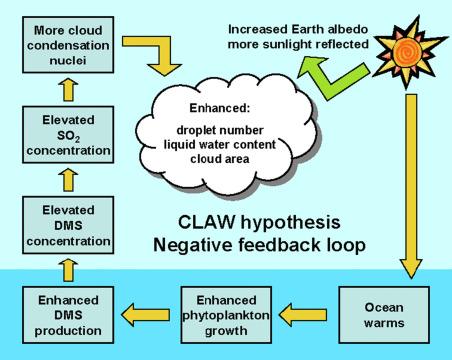In the realm of environmental science and groundbreaking ideas, one name shines brightly: James Lovelock. His pioneering work has not only sparked curiosity but also ignited a revolution in how we perceive the intricate dance between Earth and its inhabitants. Join us on a journey as we delve into the life, achievements, and lasting impact of the visionary thinker, James Lovelock.
Table of Contents
- Discovering the Life and Work of James Lovelock
- Unveiling the Gaia Hypothesis: Lovelock’s Revolutionary Theory
- Exploring Lovelock’s Impact on Environmental Science and Climate Change
- Applying Lovelock’s Principles to Sustainable Living and Technology
- Q&A
- The Conclusion
Discovering the Life and Work of James Lovelock
James Lovelock, a maverick scientist and environmentalist, has left an indelible mark on the world with his groundbreaking Gaia hypothesis. Through his work, Lovelock proposes that the Earth functions as a self-regulating organism, capable of maintaining the conditions necessary for life to flourish. This notion challenges traditional scientific thinking and has sparked profound debates in the fields of ecology and climate science.
Key Points to Explore About James Lovelock:
- Origin of the Gaia hypothesis and its implications
- Lovelock’s contributions to environmentalism and sustainability
- Controversies surrounding his ideas and impact on scientific discourse
In unraveling the life and work of James Lovelock, one delves into a realm where science and philosophy intertwine, prompting us to reconsider our relationship with the planet we call home. From his early days as an inventor to his later role as a prominent voice in environmental thought, Lovelock’s journey offers a unique perspective on our interconnectedness with the Earth and the urgent need for harmony between humanity and nature.
Unveiling the Gaia Hypothesis: Lovelock’s Revolutionary Theory
James Lovelock’s Gaia hypothesis has sparked a new way of looking at Earth as a living, self-regulating organism. According to this groundbreaking theory, the planet itself behaves like a single, complex system where living organisms and their inorganic surroundings interact to maintain the conditions necessary for life. This holistic perspective challenges traditional views of the Earth as a collection of separate entities, highlighting the interconnectedness and interdependence of all its components.
Through the Gaia hypothesis, Lovelock proposes that the Earth’s atmosphere, oceans, and land surface work together to create a self-regulating environment conducive to life. This concept suggests that the Earth is not simply a passive host to life but an active participant that can adapt and regulate itself to sustain living organisms. By recognizing the Earth as a dynamic and interconnected system, Lovelock’s theory encourages a deeper appreciation for the delicate balance that supports life on our planet and underscores the importance of preserving this harmony for generations to come.
Exploring Lovelock’s Impact on Environmental Science and Climate Change
James Lovelock, a visionary scientist known for his groundbreaking Gaia hypothesis, has left an indelible mark on environmental science and climate change research. His revolutionary theory, which posits that the Earth functions as a self-regulating living organism, has challenged conventional scientific thinking and inspired a new wave of ecological awareness.
<p>Through his extensive research and publications, Lovelock has reshaped our understanding of the delicate balance between life and the environment. His work serves as a stark reminder of the interconnectedness of all living beings and the vital importance of preserving our planet for future generations. By exploring Lovelock's contributions to environmental science, we gain valuable insights into how human actions impact the Earth's ecosystems and climate systems.</p>
Applying Lovelock’s Principles to Sustainable Living and Technology
When it comes to embracing sustainable living and technology, incorporating James Lovelock’s principles can provide valuable insights into how we interact with our environment and the innovations we develop. By aligning our practices with Lovelock’s ideas, we can foster a more harmonious relationship between humanity and the planet.
**Key Points to Consider:**
- **Holistic Approach**: Viewing the Earth as a self-regulating system can inspire us to design technology that works in synergy with nature.
- **Resilience**: Understanding resilience in ecosystems can guide us in creating sustainable solutions that adapt to changing environmental conditions.
Q&A
Q: Who is James Lovelock?
A: James Lovelock is a renowned British scientist, environmentalist, and futurist best known for proposing the Gaia hypothesis, which suggests that the Earth functions as a self-regulating system.
Q: What is the Gaia hypothesis?
A: The Gaia hypothesis, proposed by James Lovelock in the 1970s, posits that the Earth is a complex system where living organisms interact with the inorganic elements of the planet to maintain conditions necessary for life.
Q: What are some key contributions of James Lovelock to the field of environmental science?
A: James Lovelock has made significant contributions to the field of environmental science through his work on climate change, biodiversity conservation, and sustainable development, all stemming from his Gaia hypothesis.
Q: How has James Lovelock’s work influenced modern environmental movements?
A: James Lovelock’s holistic approach to understanding the Earth’s systems has influenced modern environmental movements by emphasizing the interconnectedness of all life forms and the need to care for the planet as a whole.
Q: What are some criticisms of James Lovelock’s theories?
A: Some criticisms of James Lovelock’s theories, such as the Gaia hypothesis, include concerns about anthropomorphizing the Earth and oversimplifying the complexities of ecological systems.
Q: What is James Lovelock’s vision for the future of our planet?
A: James Lovelock envisions a future where humanity embraces sustainable practices and works in harmony with the Earth’s natural systems to ensure a healthy and thriving planet for generations to come.
The Conclusion
As we conclude our journey through the life and work of the pioneering scientist James Lovelock, we are reminded of his profound impact on the fields of environmental science and ecology. From his revolutionary Gaia hypothesis to his innovative inventions, Lovelock has reshaped our understanding of the interconnectedness of all life on Earth. By delving into his remarkable legacy, we gain a deeper appreciation for the intricate balance of our planet and our responsibility to preserve it for future generations. May his insights inspire us to embrace sustainability, foster curiosity, and embark on our own quests for discovery. Join us in celebrating the extraordinary contributions of James Lovelock and continue to explore the wonders of our world with open minds and grateful hearts. Thank you for joining us on this enlightening exploration of a true visionary.



0 Comments